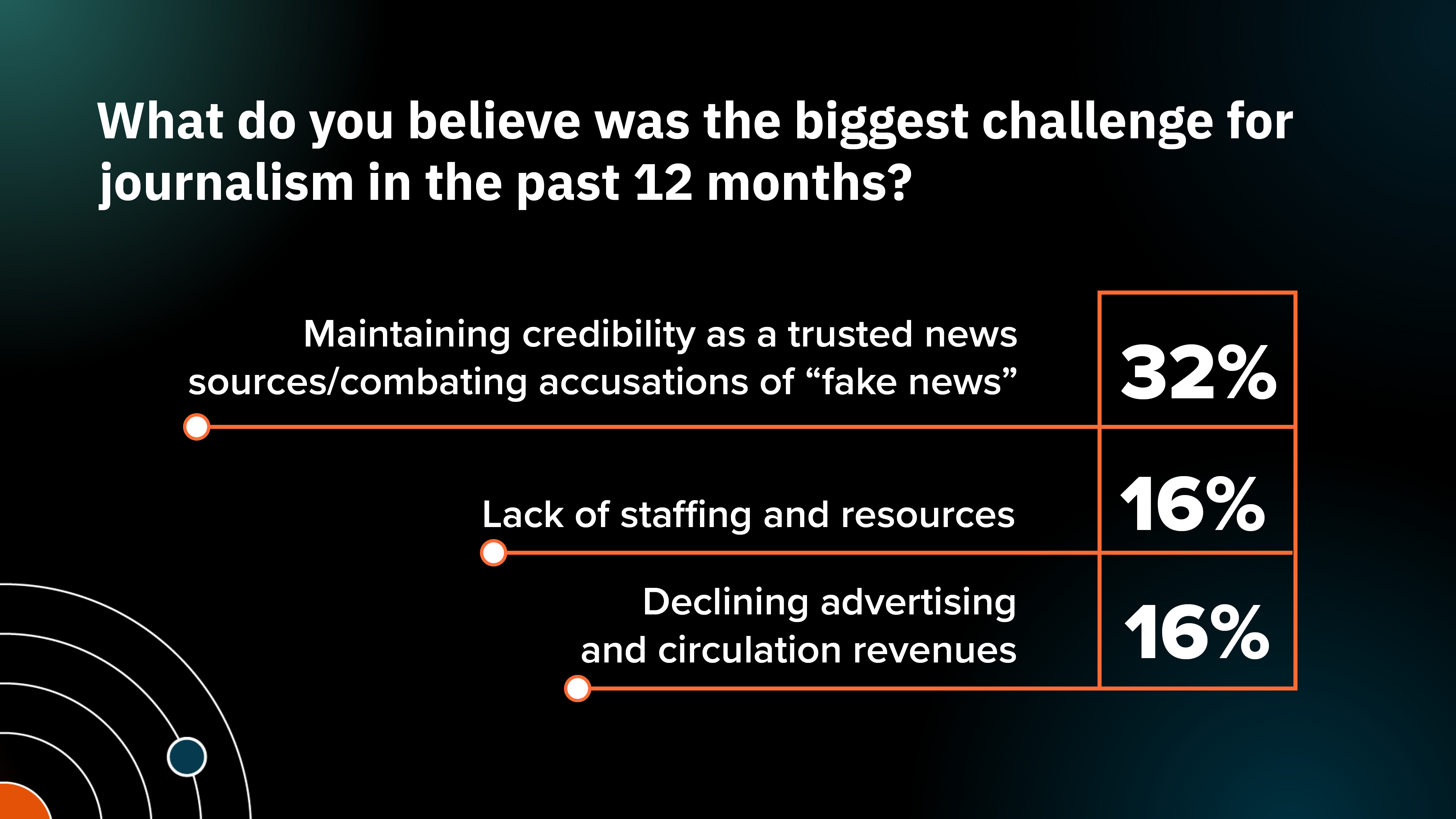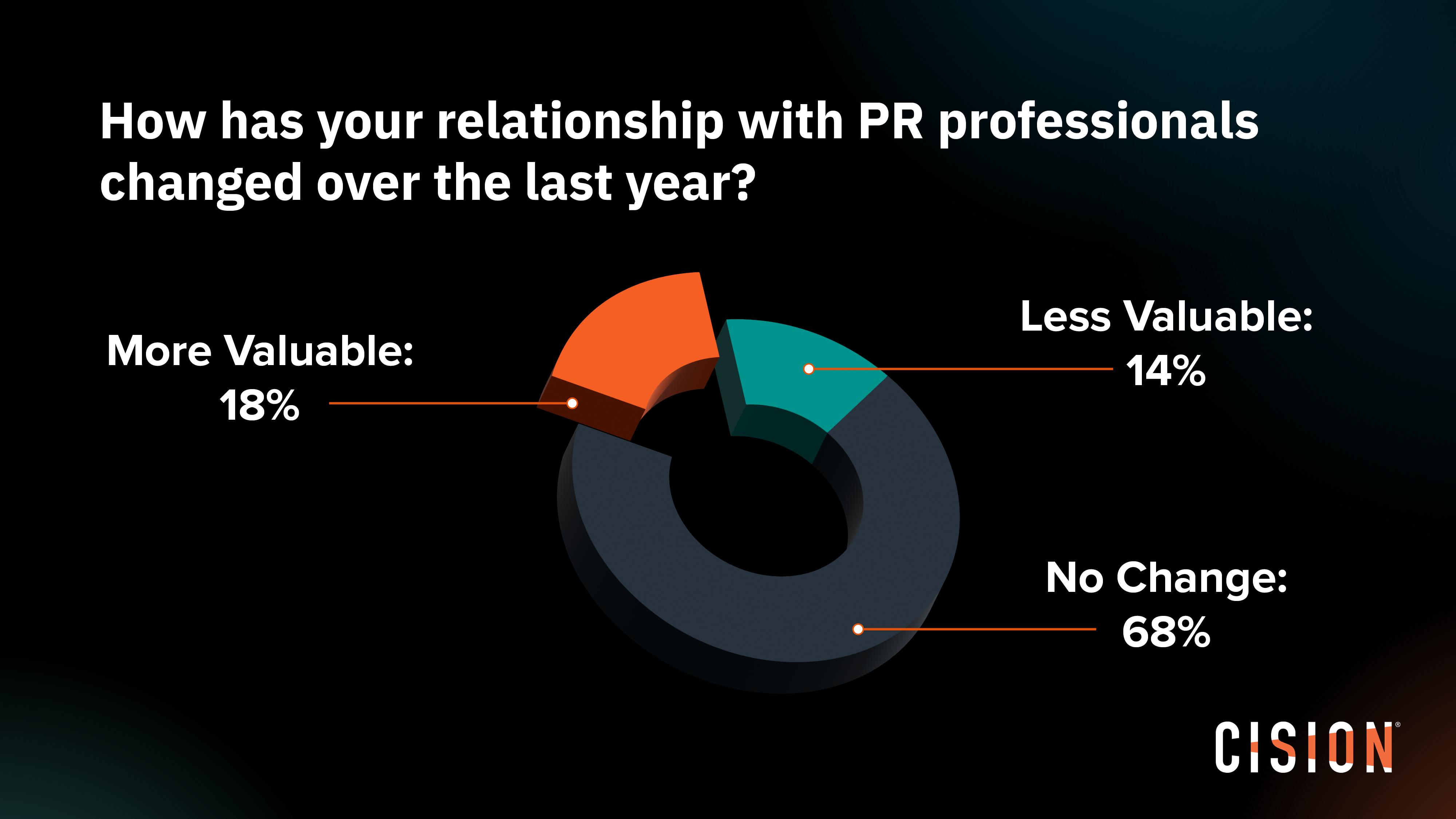The following was adapted from former Cision Chief Product Officer Jay Webster's speech at PR Decoded 2022
The relationship between communications professionals and journalists can be reciprocal, rewarding and even transformative when built on mutual trust and respect. As strategic communications have evolved and become an increasingly high-pressure, results-oriented field, there are legacy practices and tools that haven’t evolved with it.
At Cision, we talk a lot about how technology can support the evolution of strategic communications. Our recent focus has been in the development of a new environment, one that helps comms professionals develop meaningful connections with media, shifting from one that commoditizes journalists to one that fosters partnerships that are constructive for all parties.
Technology can and should be used to enrich and inform relationships in PR, not replace the people who are core to its success. In my position as a product and technology leader, my philosophy is to focus on the people behind the products and the opportunities we have to improve the ability for clients to deliver against their unique goals, rather than data and systems alone.
Here’s my take on how data-derived insights, awareness of brand sentiment and future-proofing through predictive analysis and AI will shape the next phase of the communications landscape.
Hint: It’s an art and a science.
This Cathy O'Neil quote from her book Weapons of Math Destruction is worth your consideration—it’s something I think about often: “Big Data processes codify the past. They do not invent the future. Doing that requires moral imagination, and that’s something only humans can provide. We have to explicitly embed better values into our algorithms, creating Big Data models that follow our ethical lead. Sometimes that will mean putting fairness ahead of profit.”
Relationships Matter: Companies & Journalists
From Cision’s 2022 State of the Media survey, we learned that the greatest challenges for journalists are fake news accusations, fewer resources and more work, as well as the pressure to perform.

We also learned from the 3,800 journalists who participated that trust and respect top the list of what they want from PR practitioners. At a time when the communications industry is commoditizing these relationships, it’s no surprise that our colleagues in the news business would value more authentic and less transactional relationships with communicators and PR professionals.
While considering the field of writers and producers of news—local, national and global—one must also note the shift in power from traditional news outlets owning the potential to influence thought and behavior to the rise of the influencer journalist. Due in large part to access to technology that enables individuals to reach an audience without a media company filtering their content, brands, companies and institutions have more options for telling their stories.
Technology Is a Double-Edged Sword
Over the past 20 years, popular social media platforms have gained an incredibly powerful influence across the globe. They have empowered millions of individuals to amplify their voices and enter and shape conversations across all manner of topics. And yet, built on binary, these communications channels are constantly being optimized for the benefit of their owners and investors—not their users. These unseen optimizations shape billions of conversations and in turn influence real-life opinions and decisions.
Think for a moment about the power that’s been centralized and how the very few can influence billions at a level that was once unimaginable. Without standards or effective tools to filter out disinformation or block outright lies, “social” media often doesn’t serve society in the ways it could.
Wouldn’t We All Prefer Community, Not Commodity?
It’s notable that while 18% of journalists say their relationships with PR professionals have become more valuable in the last year, an almost equal number stay that their relationships have become less valuable. And the vast majority report they remain the same.

On some level, journalists have been commoditized by technology and service organizations in the communications ecosystem. Intentionally or not, the development and proliferation of the "media database" product category invites and encourages the behavior. The practice of list building, pitching (which is often just spamming), praying and repeating in the support of garnering coverage or pickup, hasn't, in my estimation, really evolved along with the comms profession.
Many journalists report that they feel as though they are perceived as employees (Hey, write about my issue!), rather than partners. That’s what happens when they are constantly receiving pitch after pitch, release after release, mostly from strangers and mostly on content not germane to their beats.
Right now, the door is open for those communicators who can recognize the shift, and invest their energy in gaining the trust of individuals and add value to the brands they represent.
We can—and must—do better.
Cutting Through the Noise: The Mutually Beneficial Relationship of Tech and Humans
The communication and information landscape is more complex than ever. As mentioned above, there’s news and fake news, experts and influencers, and a whole lot of opinions on everything under the sun.
Individuals have digital megaphones, and communicators have their work cut out for them.
In the U.S. and around the world, it’s the end of neutrality for brands. Consumers, investors and other key stakeholders are demanding to know where they stand.
Companies and organizations are being pushed to make official statements about their positions and policies on social issues. The public also wants evidence that brands are taking action, not just making statements that reflect their values and DEI and ESG goals.
Understanding how to enter the conversation effectively without the human lens and without seeing the full picture can put brands in hot water; algorithms create echo chambers that communicators are left to contend with.
One prediction of mine is the rise of AI and predictive analysis in our work. This emerging tech may enable communicators to see what’s ahead. But as the technology evolves, the need to contextualize will become an even bigger factor. Processors are great at recognizing trends, but it takes human intelligence to explain the why, the “so what?”—and to determine the what that should follow.
What else might the future hold? I believe that technology should be seen as a way to improve, enhance and measure communications and PR activities and connections, not to replace or commoditize them. The thoughtful application of technology can help to enrich journalist profiles and elucidate interesting attributes, such as voice and audience, in addition to location and beats.
The application of fact-checking algorithms to written or audio content could feed a scoring mechanism along the continuum of reporting versus opining. That could go a long way to combating false accusations of “fake news” and separating fact from fiction.
Might we use technology to reach other professionals on a level of mutual interest? Imagine being able to foster relationships based on subject matter interest, as opposed to sending or receiving an avalanche of spam each day.
The ”R” in PR
For entities looking to own their stories in the public sphere, it’s time for a critical rebalance, where the “R” in PR gets its proper share of attention.
Relationships are fundamentally what our industry is based on, and it’s the people in our ecosystem who deserve technologies that empower them to develop and enjoy meaningful and mutually beneficial relationships.
In our work, systems do much of the heavy lifting in gathering, organizing and analyzing trillions of pieces of data, but it’s humans who understand what patterns in the data and the outcomes of the analysis mean.
I don’t mean to be pedantic, but I do think it’s important every now and then to remember that it’s humans who tell stories and absorb them. Humans make decisions about where to spend their time and money. And it’s humans who create and consume.
Technology will only get us so far. The complementary employment of technology and people, art and science, is what will move the needle on how PR and strategic communications professionals deliver value efficiently and effectively.







